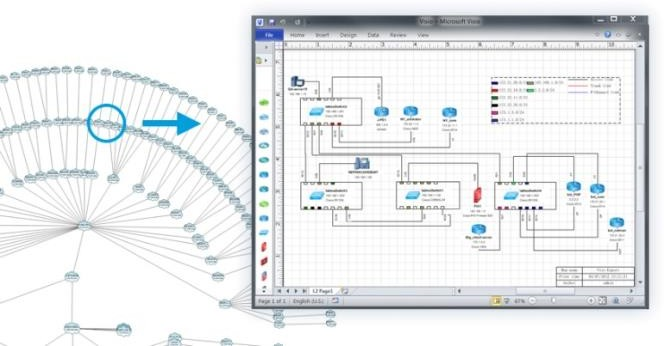Document Network with Dynamic Map
Dynamic Map represents the evolution of visualizing and documenting the network. The Dynamic Map can be created in advance to document your network, for example, mapping all sites and your core network. Dynamic Map can help you to understand a network design and ensure you always have accurate, up-to-date network documentation. You can schedule the discovery and benchmark to keep the data updated, including:
- Network inventory data
- Network topology (L2, L3, MPLS, IPSEC, SDN)
- Network design
- Network baseline and changes
- Data and functionality from the 3rd party (via API)
A sample map showing the traditional routers, switches, VPN and their connections:

Unlike static diagrams, Dynamic Maps can be created on demand, updated automatically, and shared with full data structures intact, ensuring that your documentation is always effective and relevant.
Sometimes you need documentation for a site or a branch office for audit purposes or future reference. You can use the Site Manager to create and manage the site tree. After that, you can instruct the system to create and update the site maps.
The logical relationships between sites can be visualized from the Overview map (e.g., North America, United States, Boston, and Boston DC 1). Users can then take advantage of specific functions within NetBrain’s network mapping tool to drill into any site to see the L2 or L3 relationships of devices within that Site.

Besides the Site, you can create a Device Group as a collection of devices configured with the same routing protocol or categorized by other logical conditions. A device can belong to only one site, but to multiple device groups. So, device groups provide more flexibility to organize network devices.

Users can also save their existing Dynamic Map and export it into Microsoft Visio or Word Documents with one click. The amount of detail on the Map at the time of the export is reflected in the resulting file.